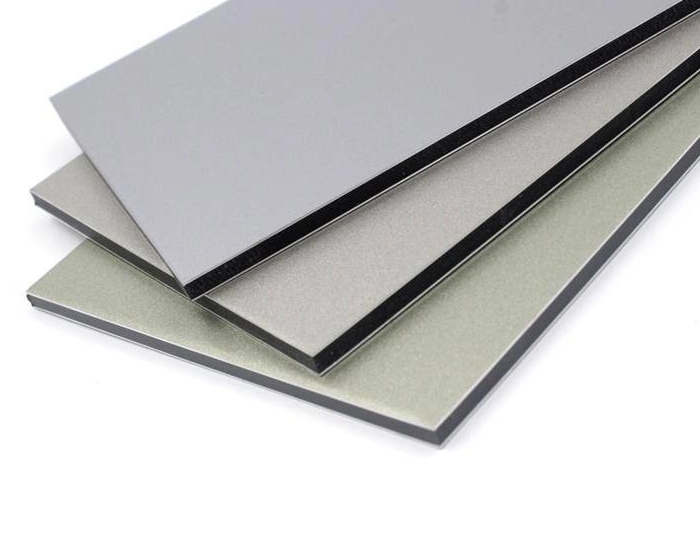Views: 236 Author: Julong Publish Time: 2024-02-02 Origin: aluminum panel systems manufacturer








Architectural design has witnessed a remarkable evolution over the years, with new materials and techniques constantly pushing the boundaries of creativity. One such material that has gained significant traction in the industry is Metal Composite Panels (MCPs). These versatile panels have revolutionized modern architecture, offering a wide range of applications and architectural possibilities.
MCPs are composed of a core material, typically polyethylene, fire-retardant material, or mineral core, sandwiched between two metal skins, such as aluminum, zinc, copper, or stainless steel. The unique composition of MCPs brings forth several advantages that have contributed to their growing popularity.
One of the key benefits of MCPs is their lightweight nature. Compared to traditional materials like solid metal sheets, MCPs significantly reduce the overall weight of structures, facilitating easier installation and reducing transportation costs. This lightweight characteristic makes MCPs particularly suitable for projects where structural strength is a concern.
In addition to being lightweight, MCPs possess exceptional durability and weather resistance. Their metal skins provide a robust protective layer that shields against harsh weather conditions, including rain, wind, and UV rays. This durability ensures that MCPs maintain their aesthetic appeal over an extended period and require minimal maintenance.
Fire safety is a crucial consideration in architecture and design. MCPs offer inherent fire-resistant properties, with some variants specifically designed to meet stringent fire safety regulations. The inclusion of a fire-retardant material or mineral core in the composition of MCPs enhances their resistance to fire, providing an added layer of safety in building applications.
MCPs also offer an extensive array of colors, finishes, and textures, enabling architects and designers to unleash their creativity and meet the unique aesthetic requirements of each project. From vibrant hues to metallic finishes and textured surfaces, MCPs allow for endless design possibilities, giving buildings a distinctive look and appeal.
The beauty of MCPs lies in their versatility, offering numerous applications in both exterior and interior architectural designs.
MCPs have become increasingly popular as cladding materials for both commercial and residential buildings. The ability to customize colors, finishes, and textures allows architects to create visually stunning facades that stand out in the urban landscape. The lightweight nature of MCPs simplifies the installation process, reducing labor costs and time. Notable projects, such as iconic skyscrapers and contemporary residential complexes, have successfully utilized MCPs to create striking exterior facades.
In addition to their extensive use in exterior applications, MCPs also offer countless opportunities for interior design. From partition walls and ceilings to decorative elements, MCPs can transform interior spaces into captivating environments. The inclusion of MCPs in interior design adds a touch of elegance, modernity, and sophistication. These panels allow for creativity in designing visually appealing and functional interior spaces.
MCPs have found a unique application in signage and branding. Their versatility and customization options make them an ideal choice for creating eye-catching signage that represents businesses and brands effectively. MCP-based signage offers durability, weather resistance, and the ability to incorporate various design elements. Whether it's for large-scale advertisements or intricate brand logos, MCPs provide a reliable material for showcasing visual identity.
As the world increasingly embraces sustainable practices, MCPs offer significant environmental benefits. MCPs are often produced using recyclable materials, making them an eco-friendly choice for architectural projects. Additionally, the energy efficiency of MCPs contributes to reducing a building's carbon footprint. These sustainable features align with the growing demand for green architecture and facilitate the pursuit of LEED certification in sustainable building projects.
One such iconic structure is the Burj Khalifa in Dubai. The world's tallest building features an exterior cladding made of MCPs. The lightweight and durable nature of these panels allowed for the construction of this awe-inspiring structure while maintaining the required structural stability. The MCP cladding enhances the modern and sleek appearance of the Burj Khalifa, contributing to its status as a global architectural marvel.
The Hearst Tower in New York City is another remarkable example of MCP application. By utilizing MCPs in its facade, the tower combines sustainability and aesthetics. The sleek metal paneling not only adds a contemporary touch to the building's design but also reflects the company's commitment to eco-friendly practices. The use of MCPs in the Hearst Tower illustrates how these panels can contribute to creating a visually stunning and environmentally conscious structure.
Metal Composite Panels (MCPs) have emerged as a transformative material in the field of modern architecture. Offering a myriad of benefits including lightweight construction, durability, weather resistance, customization options, and sustainability, MCPs have broadened the horizons of architectural design.
From exterior cladding to interior solutions and signage applications, MCPs have become an essential ingredient in creating visually appealing structures. The ability to embrace innovative design elements while maintaining functionality has allowed architects and designers to push the boundaries of creativity.
As the architectural landscape continues to evolve, MCPs provide limitless possibilities for projects of all scales. Whether it's a towering skyscraper or an intimate gallery space, MCPs offer the means to craft structures that stand out aesthetically while prioritizing environmental sustainability.
For aspiring architects, designers, and enthusiasts alike, exploring the world of MCPs can unlock a whole new realm of architectural possibilities, enabling the creation of breathtaking structures that captivate and inspire. Let us embrace this remarkable material and unleash its true potential in shaping the cities of tomorrow.
How Long Do Aluminum Composite Panels Last in UAE's Harsh Climate?
What Are The Most Effective Tools for Drilling Aluminum Composite Panels?
What Is The Cost of Aluminum Composite Panels From Suppliers in Canada?
How To Choose The Right Aluminum Composite Panel Supplier in The Philippines for Your Project?
Are Aluminum Composite Panels Weather-Resistant in Singapore’s Climate?
Is Aluminum Composite Panel Section Waterproof And Fire Resistant?